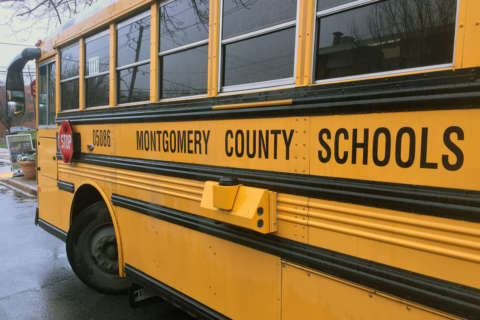WASHINGTON — Construction crews in Germantown, Maryland, officially started work this week on a massive project to build a new Seneca Valley High School, eventually tearing down and replacing the current facility, which dates back to 1974.
The new high school, which is expected to open by the fall of 2020, will be the largest in the state in terms of its size.
“It will have space for 2,400 students,” said Jack Smith, superintendent of Montgomery County Public Schools. “It will help the Germantown-Clarksburg area because of the tremendous growth that exists.”
Enrollment at the current school is about 1,300.
“I look forward to watching this building grow up out of the ground, four stories tall and 440,000 square feet of teaching, learning and opportunity,” Smith said.
Smith spoke alongside the school’s principal and a number of elected officials at a groundbreaking ceremony Monday on the school’s football field in front of cheering students who sat in the stands.
“You have a lot to be proud of,” said Montgomery County Council President Roger Berliner. “This was a priority for our county to make sure you have a terrific high school. You deserve nothing less.”
The project will cost around $130 million.
“In Montgomery County, education is an important factor,” said County Executive Isiah “Ike” Leggett. “Let’s keep in mind that the investment is in you — the students of this community. We want you to be successful.”
Following the demolition of the existing school building, new athletic fields will be constructed along Middlebrook Road and Great Seneca Highway.
Staff, student and visitor parking, along with a student drop-off loop, will be accessed from Crystal Rock Drive, according to the Maryland-National Capital Park and Planning Commission.
The new facility will provide approximately 110 classrooms and 36 support and core facility areas.
“It will have all the new electronics and all the new technology,” Leggett said.
According to the planning commission, classroom technology will include wireless network access and interactive whiteboard systems.
“Full building wireless technologies will enable students to access digital content, curricular and instructional resources with greater flexibility and efficiency,” said the commission.







